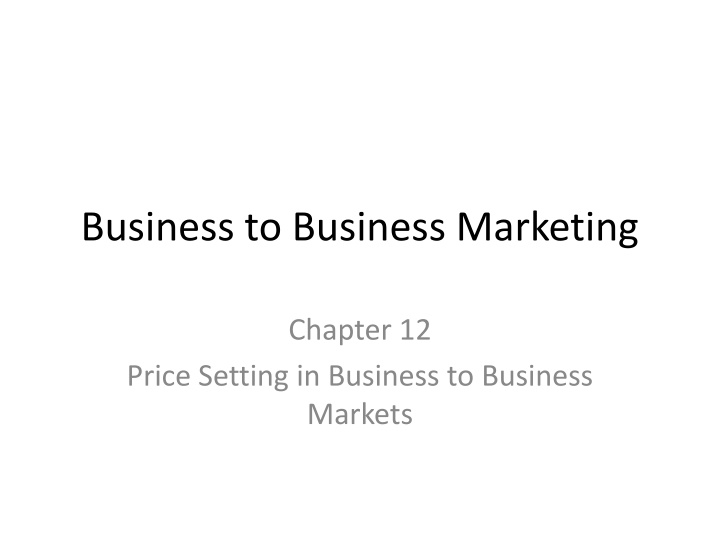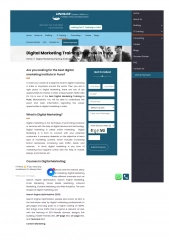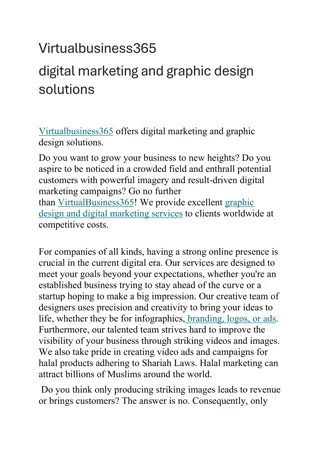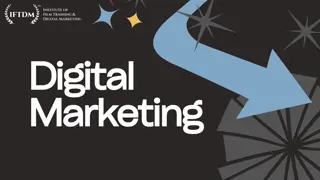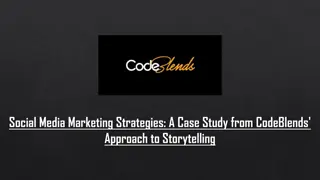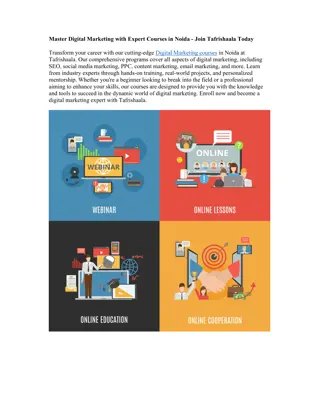Business to Business Marketing
Delve into the intricate process of price setting in business-to-business markets with a focus on strategies, challenges, and tactics employed by companies. Explore the nuances of B2B pricing factors, such as value propositions, competition analysis, and negotiation techniques. Understand the significance of pricing decisions in maintaining profitability and sustaining competitive advantage within the dynamic landscape of B2B marketing.
Download Presentation

Please find below an Image/Link to download the presentation.
The content on the website is provided AS IS for your information and personal use only. It may not be sold, licensed, or shared on other websites without obtaining consent from the author.If you encounter any issues during the download, it is possible that the publisher has removed the file from their server.
You are allowed to download the files provided on this website for personal or commercial use, subject to the condition that they are used lawfully. All files are the property of their respective owners.
The content on the website is provided AS IS for your information and personal use only. It may not be sold, licensed, or shared on other websites without obtaining consent from the author.
E N D
Presentation Transcript
Business to Business Marketing Chapter 12 Price Setting in Business to Business Markets
The importance of pricing Price has a direct and substantial effect on profitability On average, a 5 per cent increase in price increases earnings before interest and taxes (EBIT) by 22 per cent, whereas a 5 per cent increase in sales turnover increases EBIT by 12 per cent and a 5 per cent reduction in cost of good sold increases EBIT by 10 per cent (Hinterhuber, 2004)
Three Cs of Pricing Costs Customers Competitors All of these factors are important No single one of these factors can fully determine price
To calculate the price of a manufactured component Variable costs of production (e.g. materials, direct labour) 5.75 Allocated overhead costs (see below) 3.49 Full cost of production 9.24 Desired profit margin (20%) 1.85 Final selling price 11.09 Calculation of allocated overhead Total overhead cost for factory 150,000.00 Expected sales volume 43,000 units Overhead cost per unit 3.49 Complicating factors How to allocate overhead between multiple products manufactured using the same facilities? What happens if sales volume is higher or lower than target? Figure 12.1 Cost-plus pricing
Cost-plus Pricing Cost-plus pricing contains a fundamental logical flaw at its very heart: In order to set price one must know average costs of production One cannot know the average cost of production without knowing production and sales volume Sales volume is expected to vary with price Therefore, in order to set price one must first know price!
Breakeven sales analysis If we cut price, then by how much must sales volume increase so that we increase our profit? If we raise price, then by how much can sales decline before we incur a loss?
Figure 12.2: Breakeven sales analysis 20,000.00 Revenue/costs Fixed cost 15,000.00 Total cost 10,000.00 Revenue 1 5,000.00 Revenue 2 0.00 0 300 600 900 1200 1500 Volume
Breakeven sales analysis BEV = FC (P-VC) % Breakeven sales change = - Price change CM + Price change BEV: Breakeven sales volume FC: Fixed costs P: Price VC: Variable costs CM: Contribution margin
Figure 12.3: The demand curve and price elasticity of demand Price A Demand B Price Demand C Price Demand
Price elasticity of demand The following conditions relate demand elasticity to the firm s revenue Where demand is elastic, a price increase will reduce revenue and a price cut will increase revenue Where demand is inelastic, a price increase will increase revenue and a price cut will reduce revenue
Decide Strategy Role Prioritise Pricing Objectives Implement & Control Price Select Pricing Method Assess Pricing Determinants Decide Price Strategy Figure 12.4: The pricing wheel (Source: Shipley & Jobber 2001:303)
Figure 12.5: Alternative price-benefit positioning strategies Perceived benefits of competing suppliers offerings Low Med High Chancer Thriver Market Ruler Low P R I C E Bungler Also-Ran Thriver Med No-Hoper Bungler Chancer High (Source: Shipley & Jobber, 2001, Figure 4, p308)
Five ethical levels 1. Pricing is ethical where the buyer voluntarily pays the agreed price. Pricing is ethical where both parties have equal information. Pricing is ethical where there is no exploitation of a buyer s essential needs . Pricing is ethical where it is justified by costs. Pricing is ethical where everyone has equal access to goods and services regardless of ability to pay. 2. 3. 4. 5. Source: Nagle & Holden 2002
